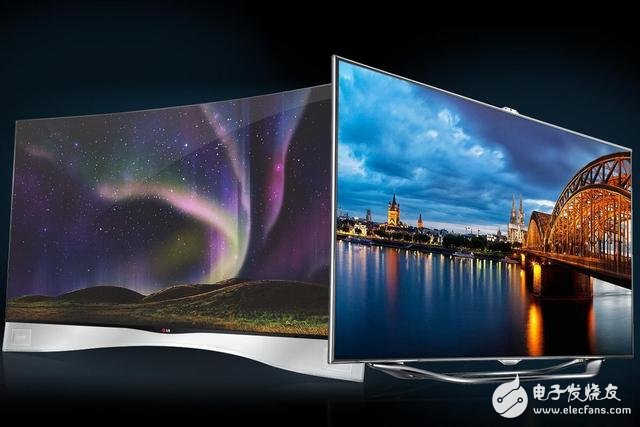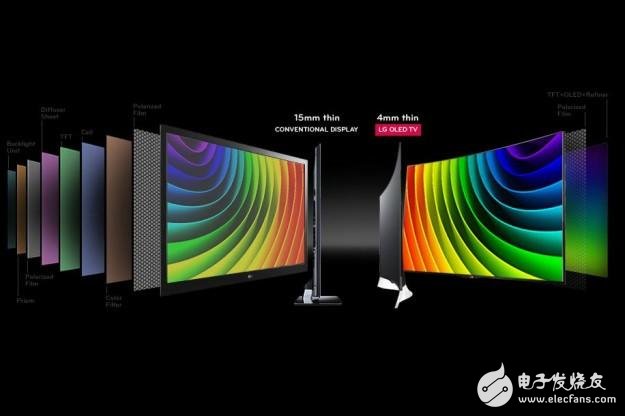We cannot deny the potential of OLED as a display technology of the next era. Its unique physical characteristics are almost "critical" for liquid crystal technology. The biggest problem of OLED is still the cost caused by the high yield of large panel cutting. problem.
OLED has fully realized electroluminescence without backlight. Therefore, colors can be displayed "natively". The LCD is obviously affected by the backlight because of the LED light-emitting diodes, just like the screen surface is covered with a layer of white yarn, which affects the quality of the image. In other words, the presence of the backlight not only affects the dark field performance of liquid crystal products, but also negatively affects the picture from beginning to end. The response time is a flaw in the dynamic smoothness of the LCD technology, and the backlight is a flaw in the picture quality.
In the field of consumer electronics, OLED technology is no longer a new concept. Since 2001, OLED technology has been used in products in the field of mobile phones. Now, LG has begun to gradually popularize OLED display technology in the TV field, so consumers have renewed a strong interest in OLED products.
So is OLED TV more advantageous than traditional LED / LCD TV? What are the deficiencies of OLED? We can understand and compare with some simple introductions.

What is LED
The full name of LED is light emitting diode. These small semiconductor diodes can convert electrical energy into light energy. At present, LEDs are widely used in the field of lighting due to their relatively small and compact size, and they have high brightness and good lighting effects. However, compared with TVs, the size of LEDs is still not small enough, so LEDs are currently only used as background light sources for LCD TVs.
What is OLED
The full name of OLED is organic light emitting diode. Simply put, OLEDs emit light and save electricity through organic compounds. Each pixel of an OLED TV can emit light independently, so it can be selectively turned off, and this is why OLED can bring an all-black background.
Which is better, OLED or LED / LCD

If in the past, OLED TVs performed better than LED / LCD TVs in almost all fields, but due to the recent emergence of quantum dot technology and improvements in backlight functions, the performance of LED / LCD TVs has doubled compared to three years ago improvement. The current LED / LCD TV has better black level performance, and greatly improves the color effect and reduces light leakage. So the difference between OLED and LED / LCD TV equipped with quantum dot technology is not so big. In addition, our comparison is not limited to picture quality, so we can compare OLED and LED / LCD in different ways.
Black level
The ability to display dark colors on the screen is arguably the most important of the many parameters of the image quality. Higher black level can bring higher contrast and richer colors. Therefore, the overall picture quality will be more dazzling. When we mention the black level, OLED undoubtedly has a dominant position and undoubtedly became the winner.
Since the LCD TV backplane of the LED TV uses the principle of backlight illumination, even if there is no more advanced dimming technology, the brightness of the LED backlight can be partially reduced, which can increase the black level of the LED TV. But although the progress is obvious and the impact of backlight is minimized, there is still a certain gap compared with OLED.
OLED TV can turn off the light-emitting function of pixels, and will not produce any light source, so it can basically appear completely black.
Winner: OLED
brightness
When comparing brightness, LED TVs have considerable advantages. LED technology has become very smart now, so with the addition of quantum dot technology, LED TV has achieved the ultimate in brightness.
Although the OLED TV is also very "smart", there is no problem in the black level and contrast, but if the brightness of the OLED TV is adjusted to the maximum, it will not only reduce the service life of the pixels, but also need some time to return to black transition.
Winner: LED / LCD
Picture color
Although OLED has inherent advantages, the quantum dot technology of LED can improve the purity of the backlight, so that the picture can reach the same level as OLED in color accuracy, color quantity and brightness.
At present, most high-end ultra-high-definition TVs are excellent in color performance, and have more potential in the future.
Win: Draw
Response time
OLED is much shorter in response time than LED / LCD TV. It can be said that OLED is currently the shortest corresponding time TV panel technology on the market. Therefore, OLED is also an absolute winner in this respect, and less response time also means that the blurring of moving targets can be reduced.
Winner: OLED
Viewing angle
OLED has once again become the winner. Although the IPS display produced by LG has a huge improvement in viewing angle compared to the traditional VA LCD display, it still cannot be compared with the OLED panel. The maximum viewing angle of the latter can reach 84 degrees. The best viewing angle of the best IPS LCD panel is only 54 degrees.
Winner: OLED
Panel size

LG just launched a 77-inch OLED TV, which is a huge leap forward compared to the previous 65-inch OLED TV. However, LED / LCD has more room in the panel size. 85 to 90-inch TVs have many different products on the market, and even some manufacturers have also launched 120-inch LED / LCD TVs. Therefore, in the extreme size of the display panel, the LED / LCD won this time.
Winner: LED / LCD
Service life
LG said that its OLED TVs can be used continuously for 54 years at 50% brightness for 5 hours a day. Whether such a promise is true or not can not be verified at present, after all, OLED TVs are now available in less than three years. However, from the current point of view, the more traditional LED / LCD TV seems to be more reliable in terms of service life.
Winner: LED / LCD
Screen aging

Perhaps here, the term screen aging seems a bit too serious. For most ordinary consumers, they basically do not face this problem.
We all know that the traditional CRT TV will have the problem of screen aging. If the picture shows the same still picture for a long time, it will "burn the screen" and cause afterimages. The reason for this problem is that the phosphor coating on the back of the screen has not been "rested" for a long time, resulting in wear and tear, causing a "burning screen" problem. Therefore, it is accurate to say that screen aging is actually a screen burning phenomenon.
Later plasma TVs and current OLED TVs also have to face this problem. Phosphors will decrease over time. If a pixel displays the same content for a long time, it will start to darken in advance, and the picture will obviously be "black" compared to other pixels. But in display life, not everyone will encounter such problems, as long as we are not intentionally damaged, there is no problem. Of course, it should be noted that if we watch channels with TV station "station logos" for a long time, such as ESPN Sports, then there will be aging problems in the corners where the station logos are displayed.
LED / LCD does not have this problem that OLED has to face, so this time it is LED / LCD that wins.
Winner: LED / LCD
power consumption
OLED panels are very thin and do not require backlight, so OLED is better than LED / LCD in thickness. The power consumption is also smaller than LED / LCD, and it saves more power in the same time.
Winner: OLED
price
Many years ago, LED / LCD TVs were also synonymous with high prices, but the price of buying LED / LCD TVs can now buy an OLED TV. For example, the 55-inch LG B6 OLED TV is priced at 2,500 US dollars (about 16930 yuan), basically in a slowly decreasing trend. The price of LED / LCD TVs including Sony and Samsung is about 1700 US dollars (about 11510 yuan) to 2000 US dollars (about 13540 yuan), which is cheaper than OLED TVs.
Winner: LED / LCD
in conclusion
In terms of picture quality, OLED still has better picture quality than LED / LCD TVs with quantum dot technology, although the latter has made considerable progress. At the same time, OLED TVs are also lighter, thinner, and more power-efficient, as well as the best viewing angle to date. Although the price is still a bit expensive now, it is slowly becoming cheaper.
So overall, OLED TVs are still better than LED / LCD TVs. But for now, LED / LCD is more cost-effective. How to choose depends on your personal preferences.
Standard Recovery Stud Diode are mainly used for rectifying and switching
It has positive pressure reduction (0.4v -- 1.0v), short reverse recovery time (2-10ns nanosecond), large reverse leakage current, low pressure resistance, generally lower than 150V, and is used in low voltage situations.
Diodes are electronic devices that have two electrodes that allow only a single current to flow in a single direction.Varicap bond (bond) is an electronic adjustable capacitor.Most diodes have a current orientation that we call reading "rectifier".The most common function of a diode is to allow only the current to pass in one direction (called forward bias) and to block in the opposite direction (called reverse bias).
Standard Recovery Stud Diode,Standard Recovery Diode,400V Standard Recovery Diode,Stud Diode
YANGZHOU POSITIONING TECH CO., LTD. , https://www.yzpst.com